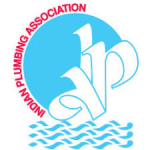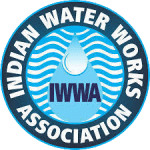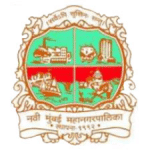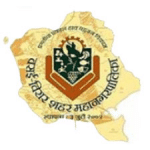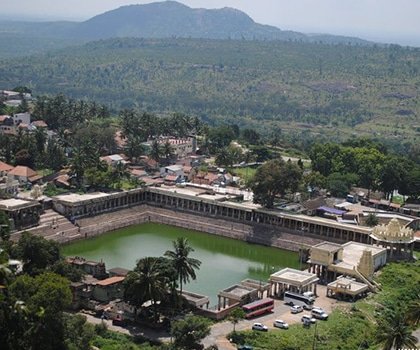FAQ's
What is Rain Water Harvesting ( RWH )?
“Rain water harvesting means arresting rainwater during monsoon storing it in natural reservoirs (aquifers) and artificial/ manmade reservoirs (tanks)”. The harvested rainwater can be used for flushing, washing, gardening, irrigation and even consumption with necessary treatment.
We all know that rainfall is seasonal and it occurs over a short period of time during the monsoon season followed with a long dry spell. During this long dry spell water is drawn from rivers, lakes, ponds and underground water sources by tube wells / bore wells etc. that leads to decreased ground water level. Experts opine that the rain being the purest form and major source of water must be saved for recharging the underground aquifer to solve the problem of water scarcity in the cities and towns due to bulging population.
Rainwater Harvesting is an age-old practice in India
Rainwater harvesting is an age-old practice in India. In ancient Tamil Nadu (India), rainwater harvesting was done by Chola kings. Rainwater from the Brihadeeswarar temple was collected in Sivaganga tank. During the later Chola period, the Vīrānam tank was built (1011 to 1037 CE) in Cuddalore district of Tamil Nadu to store water for drinking and irrigation purposes.
Types of Rainwater Harvesting Scheme
ROOFTOP RWH SYSTEM
Water from the terrace is collected in holding tank during monsoon season and utilized.

SURFACE RUNOFF RWH SYSTEM
Water runoff in Storm Water drain during monsoon season is diverted to various recharging pits with borewell.

What is the “Need” for Rainwater Harvesting System?
- To meet the ever increasing demand of water.
- To reduce ground water pollution.
- To improve the quality of ground water.
- To reduce the soil erosion.
- To reduce the runoff which chokes storm drains to avoid flooding.
- To supplement domestic water requirements during summer, drought period etc.
- To augment the ground water storage for arresting the decline in ground water level.
Advantages of Rainwater Harvesting
- Provides high quality soft water low in minerals.
- Helps in bridging the gap between supply and demand thereby reducing load on regular source of water supply.
- Reduces the cost of pumping of ground water due to rise in Ground Water Table and improves the quality of ground water through dilution.
- It is an independent and reliable system thereby making it highly appropriate for isolated as well as disperse communities or high settlements in various cities.
- Rain water harvesting is self paying investment and the entire cost incurred can be recovered in few years depending upon the cost of water from government source or tankers.
- In saline or coastal areas, rain water provides good quality water and when recharged to ground water it reduces salinity and also helps in maintaining balance between the fresh-saline water interface.
How much Area is consumed / required in doing RWH System?
Approx 15 to 20 Sqmts.
Does it work?
Yes. Rainwater harvesting is an age-old practice in India. Our ancestors harvested rain just as naturally as they tilled the ground to grow crops. The system is now more modern and reliable.
Is it mandatory to do RWH ?
As directed by the Urban Development Department, Government of Maharashtra, under section- 154 of MR & TP Act – 1966 and vide Provision No. TPB 432001/2133/ CR 230 - 01/UD-11, dated 10/3/2005, it has become mandatory for all buildings greater than 300 Sq. Mt. to have Rain Water Harvesting System for captive use.Due to this Municipal Corporation of various cities and towns have made implementation of Rainwater Harvesting System mandatory for all upcoming projects. Gram Panchayats are also implementing Rainwater Harvesting Scheme vigorously and getting support from various Government Schemes.
Can I harvest rain in my own house / society / existing or old building ?
Yes you can. Structures to harvest rain require little space. A dried borewell, a row of soak pits or a tank--concealed below the ground- are all that you need. The open spaces -- rooftops and ground - can be used as your catchment (surface to catch rain). Call us to know the complete process!!
Who will it benefit?
You !! Individuals, Societies, Bunglows, buildings, hospitals, Hotels & Resorts, Schools, Colleges, Various Industries…..almost every where water is a major requirement and the availability of water is less. Rainwater Harvesting Systems are simple to implement even for existing buildings as well as industries and can be designed to suit specific need.
How much will it cost?
RWH is less Expensive, Self paying &Easy to Implemtent, Operate & Maintain. Cost of a RWH System varies, depending on the area of your roof and other structures that you will use to harvest rain. It is self paying investment and the entire cost incurred can be recovered in few years depending upon the cost of water from govt. source or tankers. Call us and Find out More details!!
Who will build it and how long will it take?
You need a Consultant / an Expert in Rainwater Harvesting. It is simple but it still needs someone who has experience in the principles of rainwater harvesting. Then a skilled mason or a plumber can do the job for you. For upcoming projects, the builder can hire the contractors who will implement the system. Time frame depends on the size of the Project for which the Rain Water Harvesting is being Planned.
What is the Cost Of Maintenance?
The owner/user can easily maintain the systems at minimal cost. As of Today there are some very good screens available in the market that are manufactured with modernized technology which cuts downs to maintenance cost which is equal to ZERO MAINTENANCE !! Call us to get more details.
What are the various types of RWH?
There are mainly 2 types of RWH
1. Rooftop RWH
Water from the terrace is collected in holding tank/ Pond or recharge in ground during monsoon season and utilized.
2. Surface RWH
Water runoff in Storm Water drain during monsoon season is diverted to various recharging pits with borewell or collected in pond.
Can the stored rainwater in storage tanks be used for cooking and drinking?
The rainwater that falls on the roof is pure, but since it comes in contact with various surfaces on its way to the storage units, some dust and leaves may get carried away with it. This can be reduced if the terrace is swept before the rains. However, even if some dust or leaves go into the sump, they do not cause any harm as long as the water is boiled before consumption. Various filters can be utilised to remove such suspended pollutants from the rainwater collected to make it safer for consumption.
What are the Benefits of RWH System?
Rainwater Harvested can be used for Gardening, Flushing, Car washing etc. depending on the kind of use and the industry / place it is being implemented. Rooftop Rainwater is in its purest form and hence Even Temples use Rain water Harvesting to wash the utensils used for Pooja and some even use this water for bathing the idol iin the temple. Rain water Harvesting helps in bridging the gap between supply and demand thereby reducing load on regular source of water supply. It Reduces the cost of pumping of ground water due to rise in Ground Water Table. Provides high quality soft water low in minerals. Improves the quality of ground water through dilution when recharged in to ground water and Reduces soil erosion in alluvium area.
What will be the quality of water?
Rainwater Harvesing provides high quality soft water low in minerals.It Improves the quality of ground water through dilution when recharged in to ground water. Reduces soil erosion in alluvium area. You are putting rain water into the ground, which once contaminated, cannot be cleaned easily. Please do not let water with sewage or other dirt flow into your recharge pits. This is why the cleanest rainwater is from our rooftops. There are also filters to keep some dirt out. See for yourself.
What are the basic components of a RWH and conservation system?
The system mainly constitutes of following sub components:
Catchments
The which directly receives the rainfall is the catchment area of rainwater harvesting system. It may be terrace, courtyard, or paved or unpaved open ground. The terrace may be flat RCC/stone roof or sloping roof, galvanized iron or corrugated sheets can also be used for water harvesting..Therefore the catchment is the area, which actually contributes rainwater to the harvesting system.
Transportation
Rainwater from rooftop should be carried through down take water pipes or drains to storage/harvesting system. These pipes may be of PVC, asbestos, cement, cast iron, galvanized iron etc. However, PVC pipes are commonly used in the present times. They are cost effective and convenient for installation. Water from sloping roofs could be caught through gutters and down take pipe. At terraces, mouth of the each drain should have wire mesh to restrict floating material.
First Flush
First flush is a device used to flush off the water received in first shower. The first shower of rains needs to be flushed-off to avoid contaminating storable/rechargeable water by the probable contaminants of the atmosphere such as dried leaves, dust etc. It will also help in cleaning of silt and other material deposited on roof during dry seasons Provisions of first rain separator should be made at outlet of each drainpipe.
Filter
After first flushing of rainfall, water should pass through RWH filters. Rainwater Harvesting Filter is designed and placed in the Filtration Camber or installed on the mouth of Borewell in Recharging Pit. This RWH Filter is very important in keeping the rainwater in the storage tank & aquifers clean. It removes silt, dust, leaves and other matter from entering the storage tank or ground water table. We are using Latest technology filters for filtration in RWH system.
Storage / Recharging System:
The most important part of the rain water harvesting is the storage system. The storage system is designed according to the amount of water that is to be stored. The storage System can be a collection tank or Recharge pit as per site availability. The design and site (location) of the storage or the recharge system should be properly chosen.
Is RWH a new trend?
RWH can be traced back to thousands of years in India. Our ancestors traditionally harvested rainwater through tankas, johads, madakas and many such local innovative structures that can be seen even today, across the country.
Our Clients!
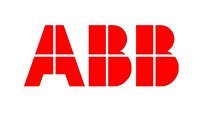









Membership & Professional Associations

